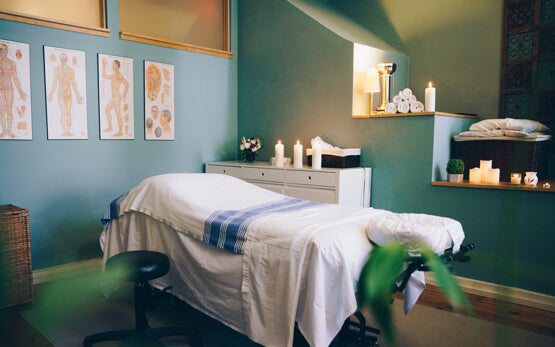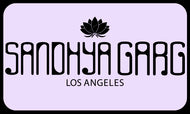
Art Nouveau
The term Art Nouveau was first used in the 1880s in the Belgian journal L'Art Moderne to describe the work of Les Vingt, twenty painters and sculptors seeking reform through art. The name was popularized by the Maison de l'Art Nouveau ("House of the New Art"), an art gallery opened in Paris in 1895 by the Franco-German art dealer Siegfried Bing. In Britain, the French term Art Nouveau was commonly used, while in France, it was often called by the term Style moderne (akin to the British term Modern Style), or Style 1900.[9] In France, it was also sometimes called Style Jules Verne (after the novelist Jules Verne), Style Métro (after Hector Guimard's iron and glass subway entrances), Art Belle Époque, or Art fin de siècle.
Art Nouveau is an international style of art, architecture and applied art, especially the decorative arts, known in different languages by different names: Jugendstil in German, Stile Liberty in Italian, Modernismo catalán in Spanish, etc. In English it is also known as the Modern Style. The style was most popular between 1890 and 1910. It was a reaction against the academic art, eclecticism and historicism of 19th century architecture and decoration. It was often inspired by natural forms such as the sinuous curves of plants and flowers. Other characteristics of Art Nouveau were a sense of dynamism and movement, often given by asymmetry or whiplash lines, and the use of modern materials, particularly iron, glass, ceramics and later concrete, to create unusual forms and larger open spaces.
One major objective of Art Nouveau was to break down the traditional distinction between fine arts (especially painting and sculpture) and applied arts. It was most widely used in interior design, graphic arts, furniture, glass art, textiles, ceramics, jewelry and metal work. The style responded to leading 19-century theoreticians, such as French architect Eugène-Emmanuel Viollet-le-Duc (1814–1879) and British art critic John Ruskin (1819–1900). In Britain, it was influenced by William Morris and the Arts and Crafts movement. German architects and designers sought a spiritually uplifting Gesamtkunstwerk ("total work of art") that would unify the architecture, furnishings, and art in the interior in a common style, to uplift and inspire the residents.
What defines art nouveau?
Art Nouveau, ornamental style of art that flourished between about 1890 and 1910 throughout Europe and the United States. Art Nouveau is characterized by its use of a long, sinuous, organic line and was employed most often in architecture, interior design, jewelry and glass design, posters, and illustration.
The first Art Nouveau houses and interior decoration appeared in Brussels in the 1890s, in the architecture and interior design of houses designed by Paul Hankar, Henry van de Velde, and especially Victor Horta, whose Hôtel Tassel was completed in 1893. It moved quickly to Paris, where it was adapted by Hector Guimard, who saw Horta's work in Brussels and applied the style for the entrances of the new Paris Métro. It reached its peak at the 1900 Paris International Exposition, which introduced the Art Nouveau work of artists such as Louis Tiffany. It appeared in graphic arts in the posters of Alphonse Mucha, and the glassware of René Lalique and Émile Gallé.
From Belgium and France, it spread to the rest of Europe, taking on different names and characteristics in each country (see Naming section below). It often appeared not only in capitals, but also in rapidly growing cities that wanted to establish artistic identities (Turin and Palermo in Italy; Glasgow in Scotland; Munich and Darmstadt in Germany), as well as in centers of independence movements (Helsinki in Finland, then part of the Russian Empire; Barcelona in Catalonia, Spain).
By 1914, and with the beginning of the First World War, Art Nouveau was largely exhausted. In the 1920s, it was replaced as the dominant architectural and decorative art style by Art Deco and then Modernism. The Art Nouveau style began to receive more positive attention from critics in the late 1960s, with a major exhibition of the work of Hector Guimard at the Museum of Modern Art in 1970.
The new art movement had its roots in Britain, in the floral designs of William Morris, and in the Arts and Crafts movement founded by the pupils of Morris. Early prototypes of the style include the Red House with interiors by Morris and architecture by Philip Webb (1859), and the lavish Peacock Room by James Abbott McNeill Whistler. The new movement was also strongly influenced by the Pre-Raphaelite painters, including Dante Gabriel Rossetti and Edward Burne-Jones, and especially by British graphic artists of the 1880s, including Selwyn Image, Heywood Sumner, Walter Crane, Alfred Gilbert, and especially Aubrey Beardsley. The chair designed by Arthur Mackmurdo has been recognized as a precursor of Art Nouveau design.
In France, it was influenced by the architectural theorist and historian Eugène Viollet-le-Duc, a declared enemy of the historical Beaux-Arts architectural style. In his 1872 book Entretiens sur l'architecture, he wrote, "Use the means and knowledge given to us by our times, without the intervening traditions which are no longer viable today, and in that way we can inaugurate a new architecture. For each function its material; for each material its form and its ornament." This book influenced a generation of architects, including Louis Sullivan, Victor Horta, Hector Guimard, and Antoni Gaudí.
The French painters Maurice Denis, Pierre Bonnard and Édouard Vuillard played an important part in integrating fine arts painting with decoration. "I believe that before everything a painting must decorate", Denis wrote in 1891. "The choice of subjects or scenes is nothing. It is by the value of tones, the coloured surface and the harmony of lines that I can reach the spirit and wake up the emotions." These painters all did both traditional painting and decorative painting on screens, in glass, and in other media.
Another important influence on the new style was Japonism. This was a wave of enthusiasm for Japanese woodblock printing, particularly the works of Hiroshige, Hokusai, and Utagawa Kunisada, which were imported into Europe beginning in the 1870s. The enterprising Siegfried Bing founded a monthly journal, Le Japon artistique in 1888, and published thirty-six issues before it ended in 1891. It influenced both collectors and artists, including Gustav Klimt. The stylized features of Japanese prints appeared in Art Nouveau graphics, porcelain, jewellery, and furniture. Since the beginning of 1860, an Far Eastern influence suddenly manifested. In 1862, art lovers from London or Paris, could buy Japanese artworks, because in that year, Japan appeared for the first time as an exhibitor at the International Exhibition in London. Also in 1862, in Paris, La Porte Chinoise store, on Rue de Rivoli, was open, where Japanese ukiyo-e and other objects from the Far Eastern were sold. In 1867, Examples of Chinese Ornaments by Owen Jones appeared, and in 1870 Art and Industries in Japan by R. Alcock, and two years later, O. H. Moser and T. W. Cutler published books about Japanese art. Some Art Nouveau artists, like Victor Horta, owned a collection of Far Eastern art, especially Japanese.
New technologies in printing and publishing allowed Art Nouveau to quickly reach a global audience. Art magazines, illustrated with photographs and colour lithographs, played an essential role in popularizing the new style. The Studio in England, Arts et idèes and Art et décoration in France, and Jugend in Germany allowed the style to spread rapidly to all corners of Europe. Aubrey Beardsley in England, and Eugène Grasset, Henri de Toulouse-Lautrec, and Félix Vallotton achieved international recognition as illustrators. With the posters by Jules Chéret for dancer Loie Fuller in 1893, and by Alphonse Mucha for actress Sarah Bernhardt in 1895, the poster became not just advertising, but an art form. Sarah Bernhardt set aside large numbers of her posters for sale to collectors.
VISIT OUR STORE DIRECTLY AT

OPEN HOURS :
Mon - Friday: 8AM - 6PM
Saturday: 9AM - 6PM
Sunday: 9AM - 5PM
Phone: +1 123 456 789
Add: 5th Ave, New York, NY 10022, USA
WE ACPECT MAJOR PAYMENT METHODS





